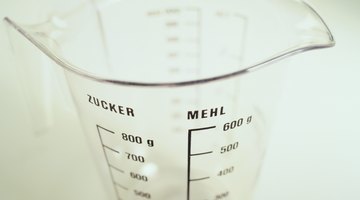How to Electroplate With Vinegar & Salt
If you're looking for a fun science project you can do at home, try electroplating pennies in a vinegar and salt solution. Electroplating deposits a metallic coating of positively charged metal ions onto metal objects that have a negative charge.

Things You Will Need
- Pyrex dish
- Distilled white vinegar
- Metric measuring cup
- Zinc anode
- Kitchen scale
- Epsom salt
- Sugar
- Toothbrush
- Toothpaste
- Gloves
- Flashlight battery
- Copper wire
- Electrical tape
- Penny
This easy experiment is a great way to demonstrate how positive and negative charges are attracted to one another.
-
Fill a large Pyrex dish with 1/2 l of distilled white vinegar.
-
Place a zinc anode into the vinegar and allow it to sit for a few hours. This will give the zinc a chance to dissolve.
-
Measure 50 g of epsom salt on a kitchen scale and add to the vinegar and zinc solution. The salt will help the liquid better conduct electricity.
-
Add 60 g of sugar to the mixture.
-
Clean a penny with a toothbrush and toothpaste and rinse well. Wear gloves when handling the clean penny to avoid soiling the penny with oils from your skin.
-
Tape one end of a length of copper wire to the positive side of a flashlight battery and tape the other end to the zinc anode. Use electrical tape to secure the wire to the battery and anode.
-
Attach another length of copper wire to the battery. Secure the other end of the wire to a shiny penny.
-
Submerge the zinc anode and the penny in the vinegar and salt solution; don't allow them to touch one another.
-
Soak the penny until it begins to form a silvery coating. At this point, you've successfully electroplated your penny.
Tip
Look for zinc anodes at boating supply stores.
References
Tips
- Look for zinc anodes at boating supply stores.
Photo Credits
- Ryan McVay/Stockbyte/Getty Images
- Ryan McVay/Stockbyte/Getty Images
More Articles



